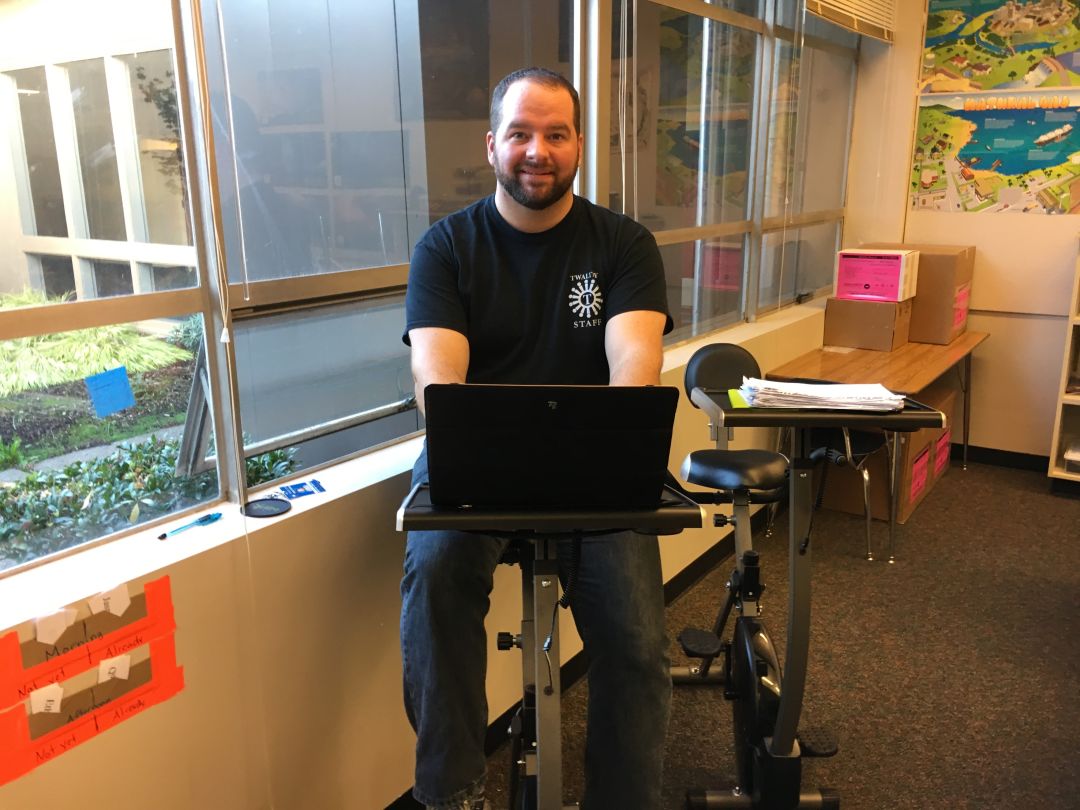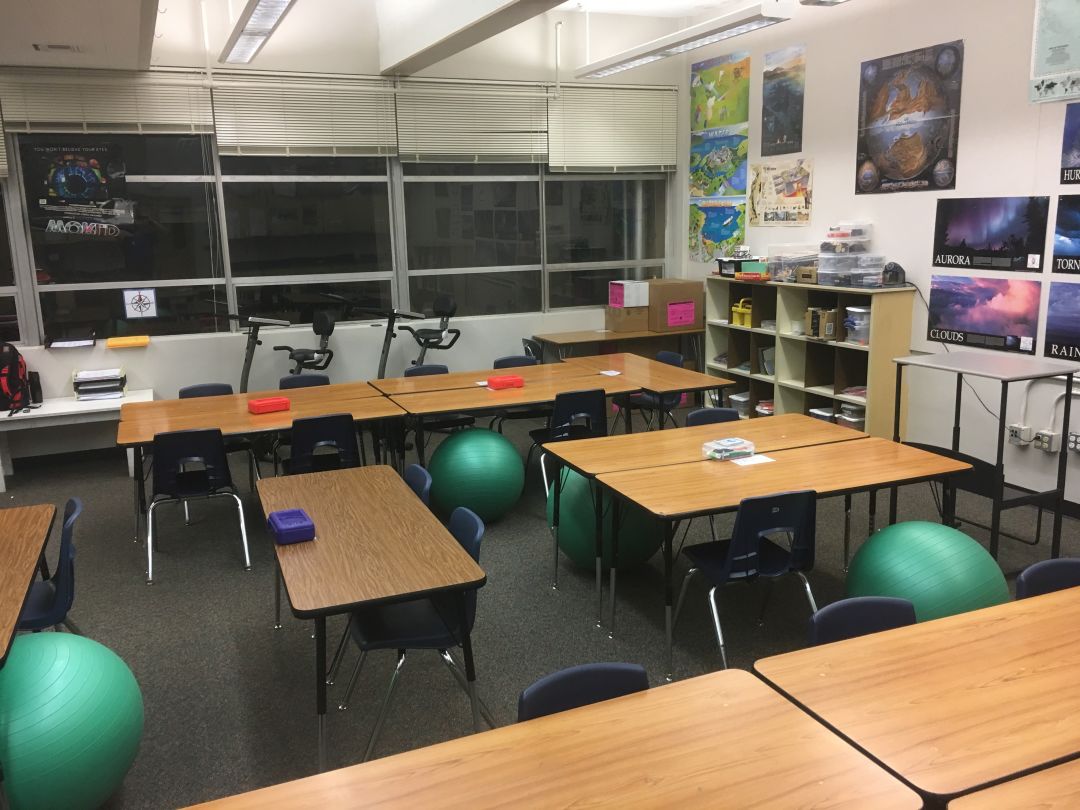Meet the Tigard Teacher Pioneering a New Kind of Physical Education

Sixth-grade teacher Dylan McCann sits on an exercise bike in his classroom.
Image: Courtesy Dylan McCann
Unlike ‘80s babies, a child born after 2007 will never know a world without the iPhone or the internet—a world where entertainment meant running around outside instead of playing Candy Crush on a pocket computer. Long hours of sedentary entertainment have become the new standard for kids, and when coupled with uninterrupted hours of sitting at school, the result is a rise in increased irritability, impaired social skills, childhood obesity, and underdeveloped sensory systems that can affect a child's health into adulthood. Fortunately, one local sixth-grade teacher has taken it upon himself to combat his students’ sedentary habits by turning his classroom into a movement-friendly learning center.
In Dylan McCann’s sixth-grade class at Tigard's Twality Middle School, yoga balls are used as chairs, and periods of exercise and stretching are incorporated throughout the day. In September, McCann successfully completed a crowdfunding campaign to add two standing desks and two bike workstations to his classroom.
“I am trying to make my classroom a place where [students] can walk through the doors and think to themselves, ‘What does my body need today?'" McCann explains. "'I have all this energy—how am I going to use it? Am I going to use it to talk, be disruptive, and pull the classroom off task? Or, am I going to use this energy in a way that is fun, healthy, productive, and helps my fellow classmates?’”

Exercise bikes and yoga balls in McCann's classroom.
Image: Courtesy Dylan McCann
McCann’s classroom experiment comes at a point in time when the sedentary nature of work, school, and entertainment is being labeled a major health risk for both children and adults. A recent study conducted by Oregon State University revealed that most Oregon elementary school children aren’t meeting the 150 minutes of weekly physical activity required by the Oregon state legislature. In another study, pediatric occupational therapist Angela Hanscom notes that the increased time kids are forced sit in school is leading to a rising number of ADHD misdiagnoses and leaving children woefully underdeveloped physically—only one out of every twelve fifth grade students she tested had normal strength and balance skills compared to children of the 1980s. As an active dancer, biker, and hiker, this is something McCann wants to fix.
“Kids sit and stare at screens and their bodies and minds are transforming to accommodate those activities—as sixth-grade students, they have no concept of the damage that it will cause in five, 10, or 20 years,” he says. “I’ve been plagued with health problems for 15 years—the importance of taking care of our bodies while we are young is so much clearer to me. That’s why I’m trying to give my students the opportunities in my classroom to do that now.”
Another way McCann is decreasing the stagnancy of his class is by employing regular “brain breaks.” He sets an alarm every period and when it goes off, the kids stop what they’re doing and join McCann in a series of stretches, exercises, or yoga poses. The short period of movement increases blood flow and oxygen to the brain and lets kids shake off their fidgety wiggles, allowing them to return to learning with a refreshed attitude. And it’s paid off: since incorporating this combination of alternative seating and regular movement breaks, McCann’s students have shown increased focus, a deeper understanding of the material, and the ability to work through tougher problems.
“Each student learns in a different way—their bodies need different things, and the moods of sixth graders can change on a dime,” he explains. “Students can come in each day with the choice of sitting in chairs, sitting on yoga balls, standing at a new stand-up desk, or riding these new exercise bike desks while learning about math, science, and themselves as learners and people.” By teaching his kids good movement habits now, he is setting them up for greater success later in life. It’s a lesson we should all stand up and pay attention to—our children’s health depends on it.




